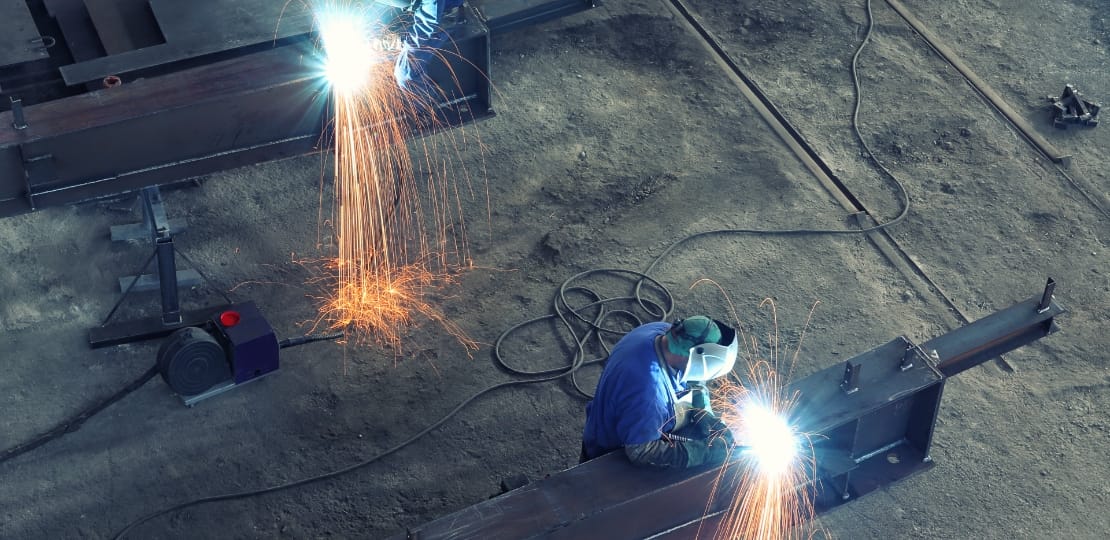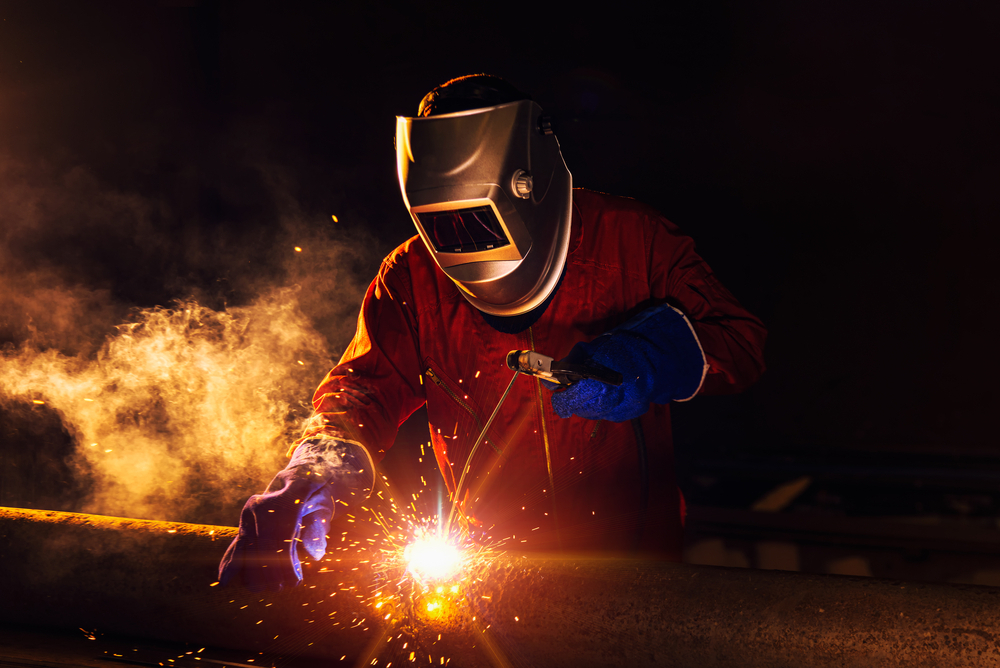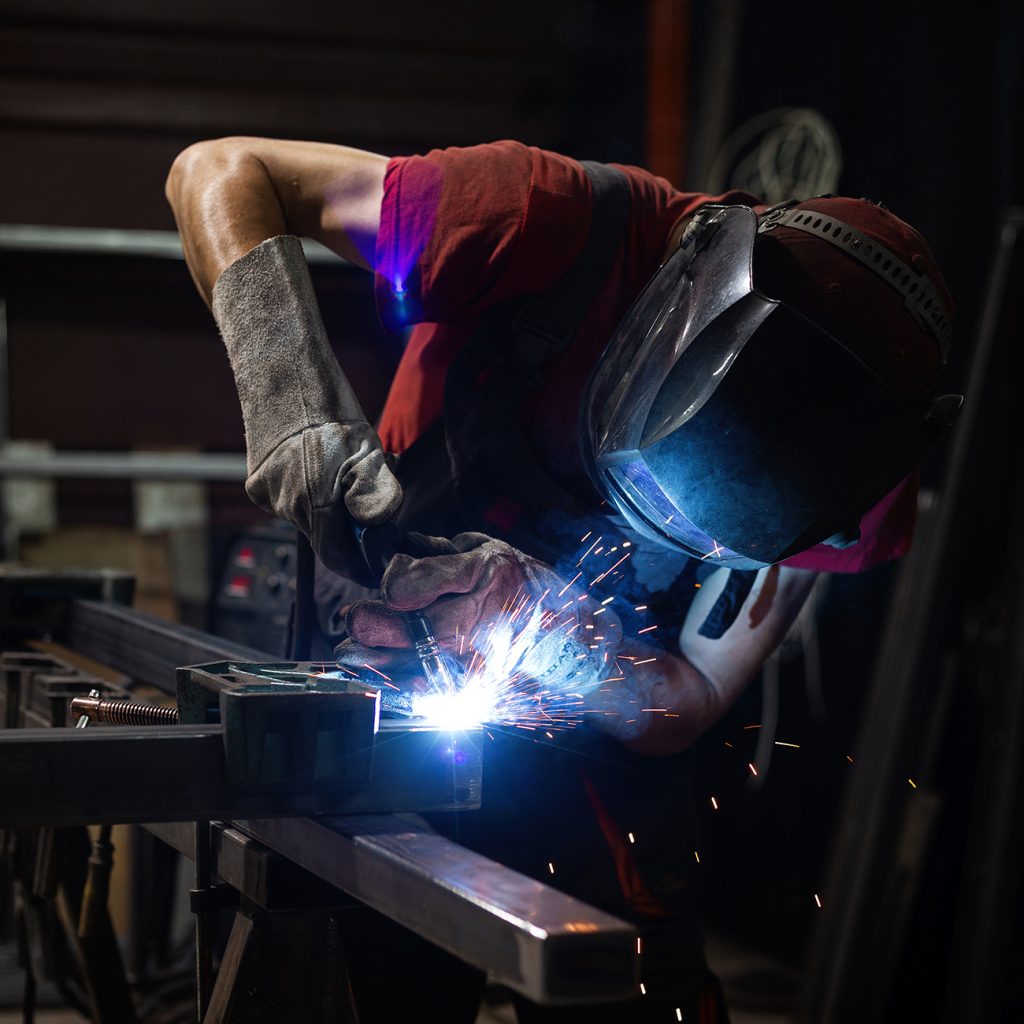Repairing cracking in welded joints: tips from Montana Mobile Welding and Repair Fabrication
Common Welding Repair Issues and Just How to Address Them Successfully
Welding fixings typically come across a variety of concerns that can threaten the stability of the end product. Typical issues include poor infiltration, porosity, and imbalance, to name a few. Each issue provides unique difficulties that need details methods for resolution. Understanding these issues is necessary for welders intending to boost their abilities and end results. This discussion will discover these usual welding repair service issues and efficient methods to resolve them.
Inadequate Penetration
Inadequate infiltration occurs when the weld steel falls short to completely fuse with the base material, leading to weak joints and prospective architectural failings. This concern typically stems from not enough heat input, wrong electrode angle, or inappropriate welding speed. Welders might run into insufficient penetration due to a miscalculation of the required specifications for a specific product thickness or kind. Additionally, contamination on the base material's surface area can impede effective bonding, aggravating the trouble. To address inadequate infiltration, welders must ensure ideal settings on their devices and preserve a tidy job surface. Normal examination of welds is advised to determine any kind of deficiencies early, allowing for timely corrections and the prevention of compromised structural stability in bonded assemblies.
Porosity
Porosity is a common flaw in welded joints that materializes as little gas bubbles caught within the weld metal. This defect can endanger the integrity of the weld, bring about decreased toughness and possible failing under stress and anxiety. Montana Mobile Welding and Repair Belgrade Welding. Porosity normally arises from contamination, moisture, or improper welding methods, which enable gases to escape right into the molten weld swimming pool. To deal with porosity, welders should guarantee correct surface area preparation, maintain a clean workplace, and make use of ideal welding specifications. In addition, choosing the ideal filler product and securing gas can mitigate gas entrapment. Regular evaluation and screening of welds can help determine porosity early, ensuring timely restorative activities are taken, therefore maintaining the top quality and integrity of the bonded structure
Misalignment
Misalignment in welding can develop from various aspects, including incorrect setup and thermal growth. Comprehending the source is vital for reliable resolution. Several correction techniques are readily available to straighten components and ensure structural integrity.
Causes of Misalignment
Welding imbalance usually originates from a variety of underlying concerns that can jeopardize structural stability. One key reason is incorrect fit-up of components prior to welding, which can bring about voids and unequal surface areas. Variations in thermal development during the welding procedure can additionally lead to distortion, especially if the products being joined have various coefficients of expansion. Additionally, poor securing and fixturing might fail to hold elements securely in place, resulting in activity throughout welding. Badly kept devices, including welding devices and devices, may present variances in the weld bead, more contributing to imbalance. Operator error, stemming from not enough training or experience, can additionally play a considerable duty in creating misaligned welds.

Adjustment Strategies Readily Available
Resolving imbalance successfully requires a combination of rehabilitative techniques customized to the details issues available. One typical technique is the use of jigs or fixtures to hold elements in the correct position during welding, making certain consistent placement. Furthermore, pre-heating the products can aid lower distortion and improve fit-up. For significant imbalance, mechanical realignment methods, such as making use of hydraulic jacks or clamps, can be utilized to deal with the setting prior to welding. Post-weld heat treatment might also be essential to relieve tensions triggered by imbalance. Cautious examination and adjustment throughout the setup phase can stop imbalance concerns from coming to be significant issues, promoting a smoother welding procedure and enhancing general architectural honesty.
Distortion
Distortion is an usual difficulty in welding that can occur from numerous variables, consisting of irregular heating & cooling. Comprehending the causes of distortion is crucial for implementing effective prevention strategies. Resolving this concern not just enhances architectural stability however likewise improves the general top quality of the weld.
Root causes of Distortion
When subjected to the intense warm of welding, products typically go through adjustments that can result in distortion. This phenomenon primarily develops from thermal development and tightening throughout the welding procedure. As the weld area warms up, the product expands; upon cooling, it contracts, which can create inner stresses. Furthermore, irregular heating throughout a work surface can worsen these stress and anxieties, resulting in warping or flexing. The kind of product likewise plays a substantial role; metals with differing thermal conductivity and coefficients of growth may react differently, resulting in unpredictable distortions. Inadequate joint layout and poor fixturing can add to misalignment throughout welding, boosting the chance of distortion. Comprehending these causes is crucial for effective welding fixing and avoidance approaches.
Prevention Techniques
Reliable prevention methods for distortion throughout welding concentrate on controlling warm input and ensuring correct joint layout. Keeping a regular warmth input helps to lessen thermal growth and contraction, which can cause distortion. Making use of techniques such as pre-heating the workpiece can likewise minimize the temperature level slope, advertising consistent heating. In addition, picking suitable joint designs, such as T-joints or lap joints, can enhance security and lower stress and anxiety focus. Carrying out appropriate fixturing to secure the workpieces in area even more aids in maintaining placement throughout the welding process. Staggered welding series can distribute heat more equally, protecting against local distortion. By applying these approaches, welders can greatly reduce the chance of distortion and improve the total quality of their welds.
Cracking
Breaking is a common issue experienced in welding repairs, usually resulting from various factors such as incorrect cooling rates, product option, or poor joint preparation. The occurrence of fractures can significantly endanger the integrity of the weld, causing possible failings during operation. To address this issue, welders must first analyze the origin, guaranteeing that products work and properly picked for the particular application. Furthermore, controlling the air conditioning price throughout the welding process is important; quick air conditioning can generate anxiety and bring about splitting. find more info Correct joint style and prep work additionally add to minimizing the threat. Implementing these approaches can improve weld quality and longevity, ultimately decreasing the probability of breaking in completed weldments.

Insufficient Fusion
A significant problem in welding repair work is incomplete blend, which occurs when the weld steel does not sufficiently bond with the base product or previous weld passes - Montana Mobile Welding and Repair Belgrade Fabrication. This flaw can lead to weak points in the joint, potentially jeopardizing the honesty of the welded framework. Aspects adding to insufficient combination include insufficient warm input, click this link incorrect welding strategy, and contamination of the surface areas being joined. To resolve this problem efficiently, welders must assure appropriate pre-weld cleansing and surface prep work, in addition to readjust their welding specifications to attain appropriate infiltration and blend. Regular assessment throughout the welding procedure can likewise aid determine insufficient fusion early, permitting prompt restorative steps to improve the general quality of the weld
Overheating
While welding repair services can boost structural stability, overheating presents a significant difficulty that can cause product deterioration. Excessive heat throughout welding can modify the mechanical residential or commercial properties of metals, causing decreased strength, increased brittleness, and bending. This sensation is specifically crucial in high-stress applications where structural reliability is critical. Identifying overheating can involve aesthetic examinations for staining or distortion, as well as monitoring temperature during the welding process. To minimize the dangers related to overheating, welders should employ ideal methods, such as managing warmth input, readjusting traveling speed, and using ideal filler products. Furthermore, implementing pre- and post-weld warmth therapies can assist restore product properties and boost the total quality of the fixing, guaranteeing long-term efficiency and safety.
Regularly Asked Questions
What Are the Usual Indicators of a Welding Problem?

Just How Can I Check My Welds for Top quality?
To evaluate welds for top quality, one can make use of visual inspections, ultrasonic testing, and radiographic approaches. Each technique ensures structural stability, identifies flaws, and validates adherence to specified standards, eventually enhancing the integrity of the welded joints.
What Safety and security Safety Measures Should I Take While Welding?
When welding, one must focus on safety and security by putting on appropriate personal protective devices, making certain appropriate ventilation, safeguarding flammable products away, keeping a clean office, and recognizing surroundings to avoid injuries and crashes.
Can I Repair a Weld Without Renovating the Entire Joint?
Repairing a weld without redesigning the whole joint is feasible, relying on the damages (Belgrade Welding). Techniques such as grinding, including filler product, or utilizing a welding procedure can efficiently address certain flaws while preserving the surrounding structure
What Tools Are Necessary for Effective Welding Fixes?
Necessary devices for efficient welding repair work consist of a welding maker, cord brush, grinder, protective equipment, these details clamps, and filler materials. Each device plays an important duty in guaranteeing quality and safety throughout the repair work process. Porosity generally arises from contamination, wetness, or improper welding strategies, which permit gases to escape into the liquified weld swimming pool. Badly conserved devices, including welding makers and devices, might introduce variances in the weld bead, further adding to misalignment. When subjected to the extreme warmth of welding, products often go through modifications that can lead to distortion. Fracturing is a typical issue encountered in welding repairs, usually resulting from numerous elements such as improper cooling prices, material choice, or poor joint prep work. A substantial problem in welding fixings is insufficient combination, which occurs when the weld metal does not appropriately bond with the base product or previous weld passes.